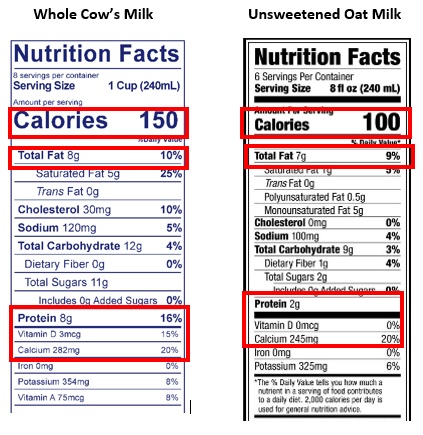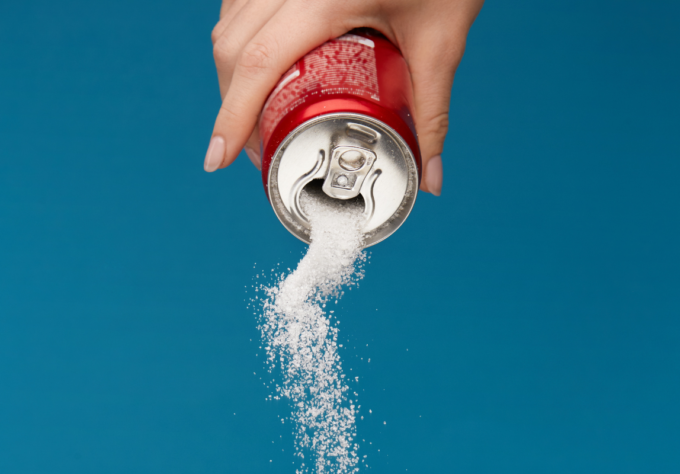When making a trip to the grocery store, milk is usually a staple on the shopping list. Over the years, milk has started to take up more and more real estate in the grocery store as different varieties have become available. A quick scan of the milk aisle can lead to confusion and curiosity about what milk should be chosen for your child. Gone are the days when cow’s milk was the only option!
In general, milk varieties can be broken down into two main categories: dairy (cow’s) milk and dairy-free alternatives. However, not all dairy-free alternatives are nutritionally comparable to cow’s milk. Being familiar with the nutritional impact of changing to a dairy-free beverage helps to ensure that your child is still getting all of the nutrition that is provided from cow’s milk.
What is the difference?
Cow’s milk provides several important nutrients, including protein, fat, vitamin D, and calcium. Protein is an important nutrient to support growth. Fat is especially important in children under 2 years of age for brain development. Vitamin D and calcium are essential vitamins/minerals to support strong bones.
Dairy-free alternatives vary in these important nutrients, so it’s important to look closely at what the beverage contains to see if it is comparable to cow’s milk. Oftentimes, calcium is added to dairy-free beverages at a higher amount than the calcium naturally found in cow’s milk. That’s because the added calcium is not as easily absorbed by the body compared to the calcium naturally found in cow’s milk.
If you choose a dairy-free beverage that is not nutritionally comparable, the nutrients lacking should be provided in your child’s diet from other food sources:
- Additional natural sources of protein may include: poultry, beef, eggs, fish, soy, beans, nuts, and seeds.
- Additional natural sources of calcium may include: yogurt, cheese, tofu, certain green leafy vegetables.
- Additional natural sources of healthy fats may include: nuts, seeds, nut butters, avocado, olive oil.
- Additional natural sources of vitamin D may include: certain fish (salmon, swordfish, tuna), egg yolks
What do I look for on the nutrition label?
It is important to look at calories, total fat, protein, vitamin D, and calcium. Dairy-free beverages containing significantly less in any of these categories indicates that it is not nutritionally comparable to cow’s milk.

Breakdown of common milk varieties
Below is a comparison of key nutrients found in 8 ounces of cow’s milk and common dairy-free alternatives.




